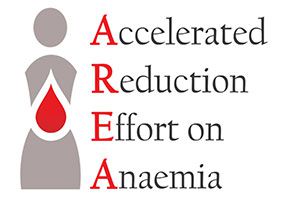Webinar: A Hands-On Briefing for Setting Your Anaemia Target
On 24 February 2016, a webinar was organised by the World Health Organisation (WHO) titled “The Global Nutrition Targets Tracking Tool: A Hands-On Briefing for Setting Your Anaemia Target”. The webinar was a step-by-step guide on how to use the tracking tool in exploring a…
 On 24 February 2016, a webinar was organised by the World Health Organisation (WHO) titled “The Global Nutrition Targets Tracking Tool: A Hands-On Briefing for Setting Your Anaemia Target”. The webinar was a step-by-step guide on how to use the tracking tool in exploring a national-level target to reduce anaemia among women of reproductive age applying the definition of the Global Nutrition Target for Anaemia.
On 24 February 2016, a webinar was organised by the World Health Organisation (WHO) titled “The Global Nutrition Targets Tracking Tool: A Hands-On Briefing for Setting Your Anaemia Target”. The webinar was a step-by-step guide on how to use the tracking tool in exploring a national-level target to reduce anaemia among women of reproductive age applying the definition of the Global Nutrition Target for Anaemia.
The online tracking tool, developed by WHO and partners, allows users to explore scenarios taking into account different rates of progress for the six Global Nutrition Targets for improving maternal, infant and young child nutrition.
Participants learned how best to use the tracking tool features and design scenarios by taking into consideration the time frame until 2025 and different rates of progress. Participants also learned how to assess a country’s contribution for the achievement of the Global Nutrition Target for Anaemia.
- View Webinar Recording
- The Tracking Tool & Setting a National Anaemia Target (pdf)
- Remaining Questions (pdf)
- Read a Sight and Life blog related to the webinar: Sight and Life website
Accelerated Reduction Effort on Anemia (AREA)
The United Nations System Standing Committee on Nutrition initiated the Accelerated Reduction Effort on Anemia (AREA) as a targeted effort to improve health and nutrition by sustainably addressing the anemia burden. The UNSCN and WHO partnered with the USAID-funded Strengthening Partnerships, Results, and Innovations in Nutrition Globally (SPRING) project, to create a moderated community of practice (CoP). WHO is also consolidating support for the CoP through a grant from the Bill and Melinda Gates Foundation.
Along with providing a space for conversation, the AREA CoP builds consensus for anemia reduction at global, regional, and national levels, and encourages commitment to reaching the Global Nutrition 2025 targets. Since its formation in June 2015, membership in the AREA CoP has grown from 51 to over 300 members from across 42 countries.
SPRING’s National Anemia Profiles are an example of an important resource that was recently shared via the AREA CoP. The profiles present a uniquely multi-sectoral view of the complex nature of anemia, using data compiled from Demographic and Health Surveys (DHS).
Learn more about AREA at the SPRING website or the AREA Knowledge Gateway for CoP members.